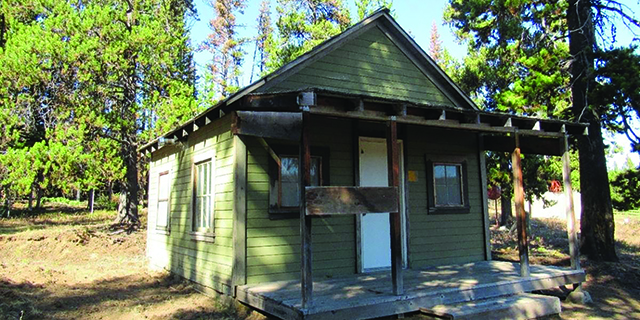Conservation fund deserves to be conserved
Published 11:19 am Tuesday, March 24, 2015
For 50 years, the Land and Water Conservation Fund has been used to protect natural areas, water and cultural heritage sites for conservation and recreation.
Except that it hasn’t — totally.
Trending
It was created way back in 1965, funded by a portion of the royalties paid for offshore drilling on the outer continental shelf, and used those dollars to create and improve national parks, wildlife refuges, national forests, city parks and outdoor recreation opportunities.
But the Land & Water Conservation Fund, like most things Congress can get their grubby little hands on, doesn’t work the way it was intended. Because just about every year, Congress funnels part of those $900 million or so away from their intended use to fill budget deficits and fund pet projects.
For the good of the country it must stop. Fifty years of robbing the future to pay off the present are too many. But now the fund — which has seen more than $18 billion already taken out of it — is facing an even greater threat, as it must be reauthorized by Congress by September or risk disappearing altogether.
Congress, as narrow-minded and short-term thinking as they come over those decades, continues to kick the important can down the road as it wins and loses political points by the hour.
The annual hand in the LWCF cookie jar has left more than $27 billion in conservation and recreation projects unfunded. And that backlog has harmed critical areas such as the Everglades in Florida or, closer to home, in the Grande Ronde Valley to the Columbia Gorge.
Back in the 1960s and ’70s funds were used to purchase land along McKay Creek, build tennis courts in Athena, develop a city park and marina in Umatilla and develop Roy Raley Park in Pendleton. More recently they have been used at Orchard Park and the Hermiston Butte, Pendleton River Parkway and numerous parks in the city, the Umatilla fishing dock and more.
Trending
Currently in Wallowa County, members of the public eagerly await the LWCF’s reauthorization because it’ll clear the way for a critical award of up to $3 million through the federal Forest Legacy program, which resides under the LWCF umbrella. The money will be used to help transfer 1,533 acres of privately owned ground on the East Moraine to county ownership, preserving it against development.
Since its inception, the LWCF has provided more than $260 million to the state. That’s a chunk of change, but it’s also piddling compared to what it could be — what big projects could be done, what beautiful and valuable land could be saved, and what gosh darn fun it would be to have a new tennis court in Athena.
Conservation and recreation aren’t the best immediate investment, which is what Congress is interested in. But if we want our country to remain sustainable and livable, we have to set aside a little bit for the long haul. Every investor knows that is a good strategy for future wealth.
The Land & Water Conservation Fund has always been popular because it doesn’t rely on taxpayer dollars and goes to pay for projects and places Americans enjoy. Tell your representative to reauthorize it and then leave it alone.









